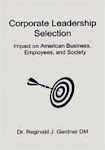What’s UP (Weekly, Hot, Applicable Topic Summary - Unbiased Perspective)
The Changing of the Guard – Part III
This week’s blog is the third entry of a three-part series on workplace diversity, aging, and the corporate workforce. The changing of the guard is inevitable – turnover occurs. Employees may leave the company for a better opportunity elsewhere. Corporate downsizing as a result of a merger, acquisition, or offshoring of jobs may result in the termination of valuable, knowledgeable workers. Recently hired employees may prove to NOT be a fit for the organization. Or in some cases, employees simply retire. The method in which the organization handles the knowledge management process and the termination of “senior” employers with the knowledge and experience to help the organization achieve its goals and objectives will be crucial.
Existing Literature on Age Discrimination and Workplace Diversity
Two of the recommendations stated in the conclusion of my book on Corporate Leadership Selection are derived from the existing research on workplace diversity and the aging American workforce. First, U.S. corporations must develop an inventory skills database of the current knowledge, skills, and abilities within the company. Second, U.S. corporations must have a comprehensive succession planning process in place to ensure the corporate pipeline is “stocked” with capable, competent executives who will maintain (and potentially improve) corporate operations.
A skills inventory of the organization’s workforce will identify the existing employee competencies. This can/should be used in conjunction with the organization’s long-term strategic plan. It will highlight any gaps between the organization’s future plans and the human capital needed to get there. For example, if the organizational goal is to transition its existing business applications to a new technology, it is imperative that there are knowledgeable workers involved that know the business application’s capabilities AND the new technology to support those business applications. Merely terminating “senior” employees with the business application knowledge will not help the organization effectively implement the new technology. The short-term gain of reduced salary by terminating the experienced worker(s) will be negated by the learning curve and training expense of developing inexperienced employees.
In addition to the inventory skills database, a comprehensive succession planning process must be in place. Executed properly, succession planning serves as a duel process of identifying potential, future organization leaders and overseeing organizational knowledge transfer through talent management and employee development. However, these initiatives may not be successful if the workers with the experience have been released from the company. External consultants and trainers may be able to teach the concepts of the new business application or the new technology, but they can NOT teach employees about the organization’s culture, values, and attitudes.
Consequences of Age Discrimination in the Workplace
U.S. corporate culture has evolved into one of persistent vigilance. Ethical leadership behavior is closely monitored both inside and outside of the organization. When the aforementioned inevitable turnover (job elimination) occurs, leadership must conduct this activity with the highest degree of integrity by retaining employees based on their competence and future contributions to the company.
There are two significant, negative impacts to the organization when terminating, or not hiring, employees based on their age. First, age discrimination is against the law. There are legal consequences, often with substantial financial penalties, for not complying with federal regulations. Second, employee morale of the remaining workforce will be low – productivity will suffer. Although no research studies have been observed to substantiate the impact to employee productivity, a viable case can be made that an ample portion of time allotted to getting work done will now be spent in conversations on leadership behavior in eliminating competent, knowledgeable workers based on their age.
In today’s technology-based environment, there are corporate “chat rooms”, websites, “You-Tube”, and yes, blog entries to communicate corporate activity. Inside the corporation, the use of technology to discuss leadership’s attitudes and behavior is not needed. The amount of time and energy spent in “hallway talk” and conversations around the water cooler about leadership practices can offset any anticipated cost savings of any corporate decision.
As a result, the best mode of operation is for organizational leaders to execute employee selection and employee termination with a high degree of integrity. Further, these decisions must be made based on knowledge, competence, and future potential contributions to the organization, instead of based merely on the age of those considered. More information on corporate leadership can be found in Corporate Leadership Selection: Impact on American Business, Employees, and Society (Authorhouse Publishing). Feedback to the bi-monthly blog entry is always welcome.
Subscribe to:
Post Comments (Atom)


No comments:
Post a Comment